Recently the highest ranked player in women’s tennis was giving the impression that things were, finally, tumbling into order. Iga Swiatek had just won Roland Garros for the first time two years ago and her tennis career was shaping towards an upward trajectory that she had previously doubted would happen.
“I think in 2020 the main thing that I felt was confusion, because I have never really believed 100 per cent that I can actually win a Grand Slam,” she said.
Whatever confusion was apparent then, her recent schooling of 18-year-old American Coco Gauff 6-1, 6-3 in the French Open final for her second major win has entirely purged any lingering sense of hesitancy to take a forward step.

Now on a 35-match winning streak that stretches back to February 16th, equalling Serena Williams’ for the longest winning run in the 21st century, one more win at Wimbledon would hand Swiatek the record outright. If she were to win the women’s singles title, the Pole would also become the only female player in this century to have won seven successive tournaments.
Actor Armie Hammer resurfaces as host of celebrity podcast
Heart-stopping Halloween terror: 13 of cinema’s greatest jump scares
Doctor Odyssey’s core message: just imagine Pacey from Dawson’s Creek holding you tight and saying, ‘Shhh, it’s okay’
Conor Niland’s The Racket nominated for William Hill Sports Book of the Year
Far off Martina Navratilova’s all-time record of 74 wins in-a-row achieved in 1984, or Steffi Graf, who chalked up 66 straight wins between 1989 and 1990, most would struggle to pick the former Wimbledon junior champion out of a lineup with Anett Kontaveit from Estonia, Tunisia’s Ons Jabeur, Spain’s Paula Badosa, or, Maria Sakkari from Greece. Who are they? The numbers two, three, four and five ranked women players in the world rankings.
Maybe in professional golf, Scottie Scheffler is not that far off as a low profile comparison, at least to those beyond the fairways. Well known to fans that watch PGA events regularly, the major winner and current world number one is neither a household name nor a recognisable face outside the sport.
But on her current super-hot streak, the 21-year-old Polish player is the headline act going into next week despite an unimpressive record on grass. Her best Wimbledon was the fourth round, leaving her with something of a point to prove as to whether she will have feet of clay as soon as she steps on to the London grass.
Still, she is the champion in other player’s eyes, quite a distinction from being the world number one. As her opponents see the draw, it is Swiatek against the field. Her current unbeaten run and her power game as well as the toolbox to figure out opponents during matches have, in recent months, been basic strengths that have become impossible to break down.
“Right now I can find solutions and use different skills to sometimes come back and sometimes just have an advantage over my opponent,” she said on the eve of the Italian Open, the final tournament before the French Open. “That’s basically the thing that I’m most proud of, because I was working really hard on that. Last year I felt like I didn’t have many choices. This year it has changed.”
Of course, she won in Rome and in Paris prompting her idol Rafa Nadal to comment.
“When somebody like her is winning the tournaments and is winning with these results, it is something special, no?” said the 22 time Grand Slam winner.
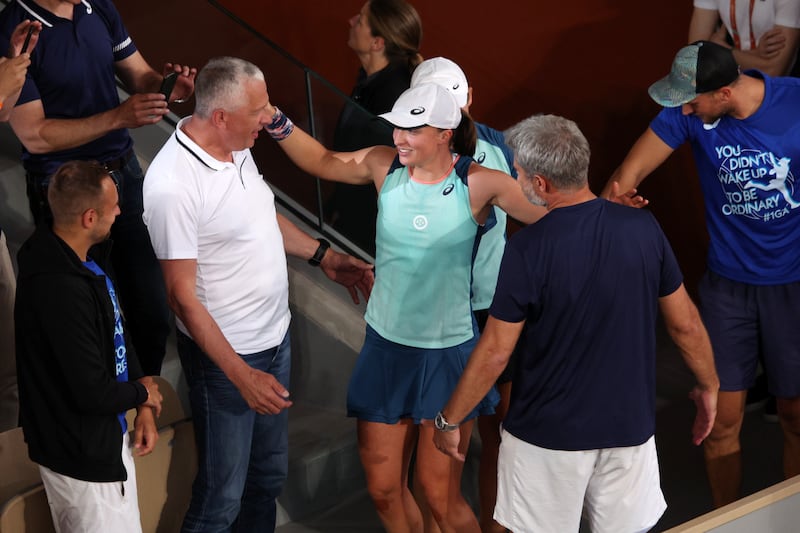
Never far from the sporting arena, while her mother is an orthodontist, Swiatek’s father Tomasz was an elite a Polish rower, who competed in the men’s quadruple sculls event at the 1988 Summer Olympics, winning the “B” final to finish seventh overall. The question for Swiatek was which sport to pick up.
Tomasz wanted his daughters to become competitive athletes. But his preference was for them to take up an individual sport rather than a team sport to have better control of their chances of success. Older sister Agata initially started out as a swimmer but switched to tennis. Driven by sibling rivalry, Iga then followed Agata into tennis because she wanted to beat her sister as well as be like her.
Since then two aspects to the Swiatek game has allowed her stand out, her attention to her mental health and an aggressive all court style of play that can generate similar velocities to some of the top players in men’s tennis. Because of the impulse to hit her shots, she generates high amounts of winners as well as unforced errors. In total at 2020 French Open, she hit 175 winners to 127 unforced errors.
On her run to that same French Open title, Świątek’s average forehand speed was 118 kph, only four kph below that of the average male forehand speed. Some were recorded at 127 kph, the fastest of any female player in the draw.
Her backhand speed peaked at 122 kph, again the fastest of any female player and equal to Dominic Thiem’s backhand speed. That was more pertinent because Thiem possessed the fastest backhand of any male player at the tournament. Additionally, Swiatek’s forehand topspin has reached quite a vicious 3453 revolutions per minute (rpm), which is comparable to her idol Nadal.
A strong serve, exceptional speed, movement, and court coverage, Swiątek is also notable for her positive mental attitude and composure under pressure, which has been credited to her work with sports psychologist Daria Abramowicz. Part of that embraces not ever being too far from expressing emotion.
Earlier this year, after celebrating a win with tears, she joked that “a week without crying is not a week.”
So too does Swiatek seem to be among a group of Gen Z athletes who are willing to speak out on matters other than tennis. They don’t just ‘shut up and dribble.’ Teen Gauf is another in the circle, as is Naomi Osaka, who will miss this year’s event through injury.
She has worn a blue and yellow ribbon fixed to her white baseball cap since Russia began its invasion of Ukraine in February and explained that she will continue to have the ribbon to raise awareness.
“I want to say something to Ukraine, to stay strong because the world is still there,” she said, which was met by a sustained French Open applause.
“I think it’s like an individual choice. And, you know, I’m also not feeling comfortable with talking about every kind of popular topic, you know. But this one, it really… it was really emotional for me, and still is. I felt like I want people to be more aware of what’s going on. Yeah, I think if it’s really important for us, we should maybe use our voice, because we are public figures and we have some impact.
“But honestly, it’s not like everybody should do it. Because it also brings a little bit more pressure. Because you feel like you have that impact, it can kind of mess with your performance. So I’m trying to really balance that. For sure, when I became world number one I felt like I have some kind of obligation to speak, but I really want to keep doing that in a smart way and maybe not too much so it’s not too overwhelming.”
More than any other tournament, Wimbledon has a way of creating the persona. Its timing for early evening terrestrial television, the BBC blanket coverage with a selection of talking heads, most of them former winners, but this year without the jailed Boris Becker, makes personalities out of players.
Swiatek, casual tennis fans may not know too well. But give her a run deep into the second week and that will change for ever.
Four to watch
Coco Gauff (USA)
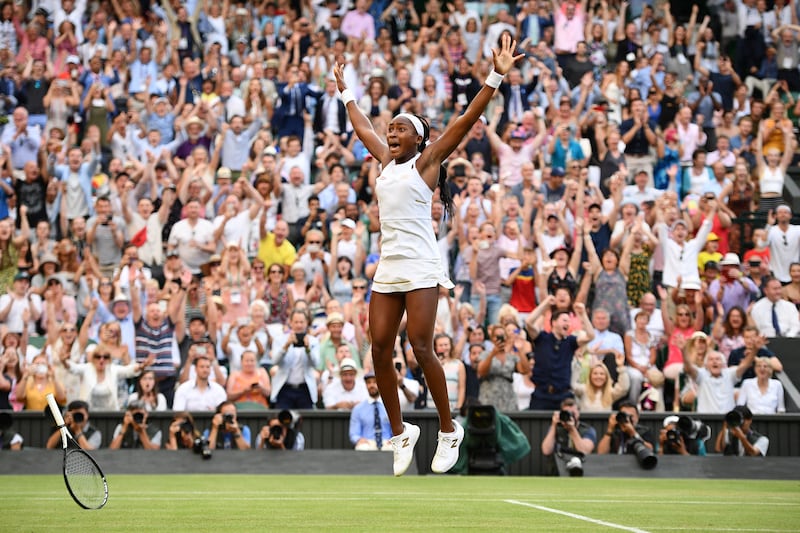
Gauff made it to the final of the French Open but blown away by Iga Swiatek. Still just 18-years-old, she has a world ranking of 13 and as a 15-year-old arrived with a flash when she beat Venus Williams at Wimbledon. She is a crowd pleaser with an athletic game and a year stronger too. Now she is also comfortable in being a show court player.
Serena Williams (USA)
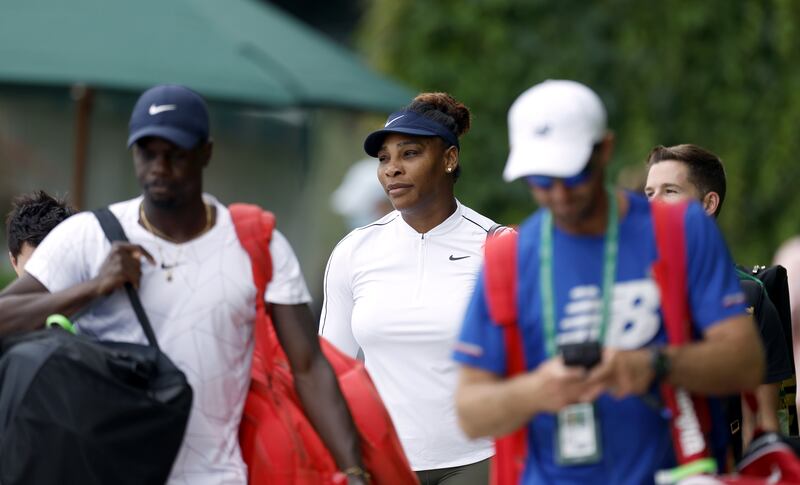
Williams is 40-years-old and returns after a year off. That won’t matter to those whose side of the draw she is on. Her ‘re-entry’ stage doubles match at Eastbourne was typically strewn with mishits and winners. A two-week Wimbledon run is too much to ask from the 23 time Grand Slam winner but the potential damage she can do to the draw is immense.
Ons Jabeur (Tunisia)
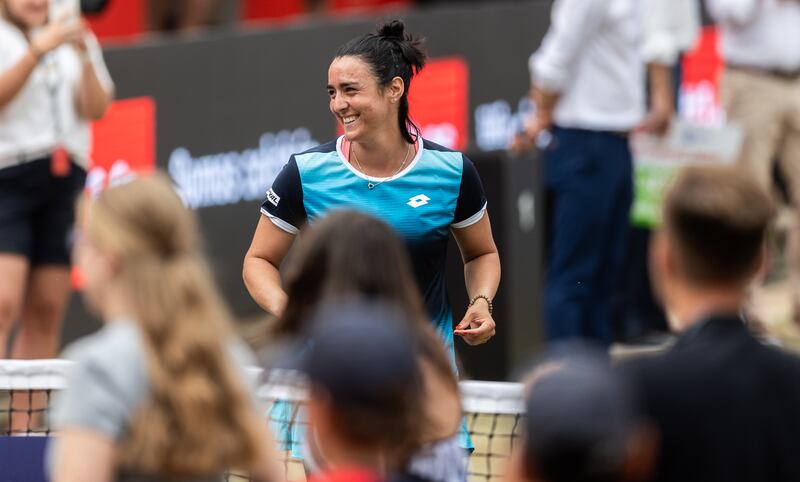
Jabeur is the current number one Tunisian player and at three in the world the joint highest-ranked African (Amanda Coetzer 1997) and Arab tennis player in ATP and WTA rankings history. Her profile rose this week as she was Serena’s double’s partner. She recently picked up her second WTA title of the year in Berlin. Importantly it was on grass.
Emma Raducanu (Britain)
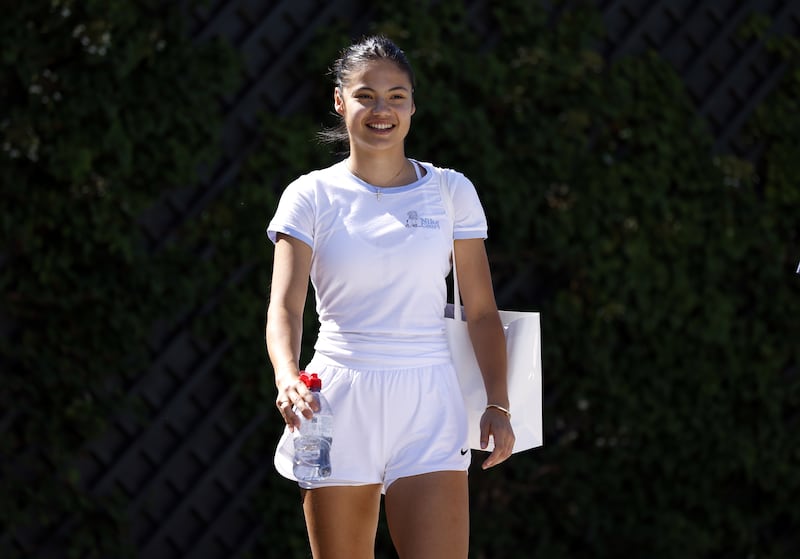
The future of the game in the UK looked safe when she won the 2021 US Open last. Since then she has become, not quite lost but unable to reach the same heights, retiring at Wimbledon last year with ‘breathing issues.’ John McEnroe suggested she tanked. A year older, although recently injured, she’s back and seeded with a nation’s hopes on her shoulders.






